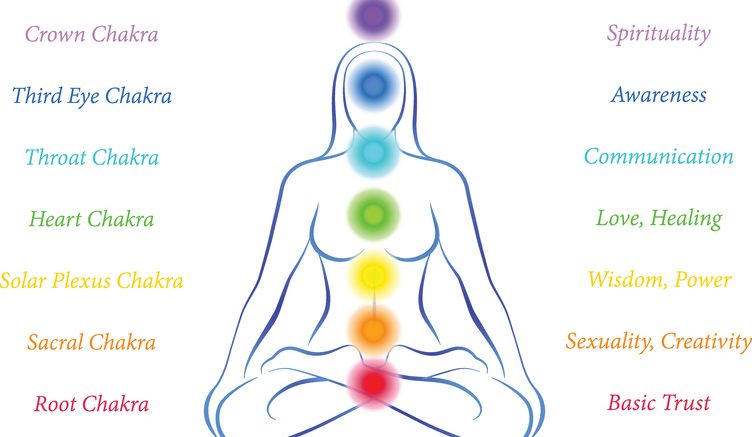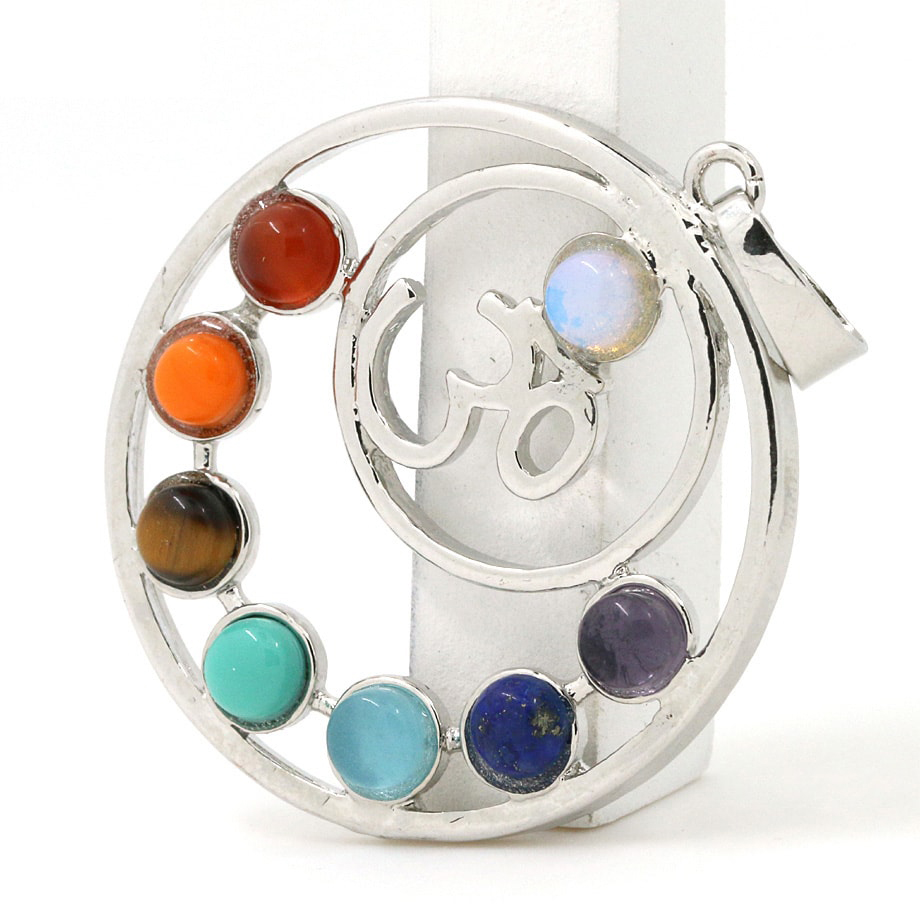What do you know about chakras? When you think about it, the idea of chakras isn’t as bizarre as it sounds to some beginners. We’re comfortable knowing that energy exists everywhere, even though we can’t always see or sense it in its many forms.
In the energetic body, there are locations at which your personal energy can become stuck. Chakras (Sanskrit for “wheel” or “disk”) are simply the chambers through which our energy travels.
We know that energy cannot be destroyed, but it can be transformed. The characteristics associated with that particular chakra can transform the energy it meets. These impacts can manifest themselves spiritually, emotionally, physically… or all three.
So what exactly is chakra work? Words often associated include “opening”, “cleansing”, “clearing”, and “balancing”. How is this done? Typically, after a period of meditation, one opens their chakras through visualization, imagining the lotus that corresponds to each in bloom.
This single-pointed focus on the opening of each chakra allows energy to flow through. “Where your attention goes, energy flows,” as is the saying. The flow of energy clears, or cleanses, those areas where energy was previously stuck, and this helps provide balance.
However, you’re not restricted to meditation here. There are a ton of other ways to perform chakra maintenance. Reiki, yoga, breath work, and nature-oriented activities are all beneficial to balance.
Like a lot of life’s work, chakra work is best addressed from the ground up. Here are the seven major chakras, from root to crown, with a simple description of what they rule, and what kind of stones can facilitate you in working with them.
1. The Root Chakra
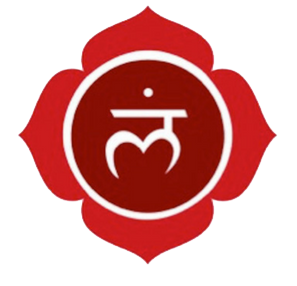
Properties: Also known as the Muladhara chakra, the root chakra incorporates your tailbone, the base of your spine, and at the very core, the majority of your reproductive organs. Visualize your root chakra as being a lotus with four petals in a deep, rich red color.
Qualities: The root chakra represents stability and security. As such, it affects your confidence, level of courage, and self-esteem. Uncertainty, irrational fear, and strong, hair-trigger survival instincts can accompany a fraught root chakra.
Beneficial Stones: Black tourmaline, smoky quartz, garnet, red jasper, obsidian, onyx, bloodstone, and hematite can all help you feel more grounded and able to face challenges head on.
2. The Sacral Chakra

Properties: Also known as the Svadhishthana chakra, the sacral chakra is located just below your navel, above the root. At the center of this chakra is the first lumbar of your spine, the spleen, large intestine, and in women, the ovaries. When you meditate on the sacral chakra, imagine it as a vibrant orange lotus with six petals.
Qualities: The sacral chakra is all about attitude. It helps dictate how you perceive and engage with your surroundings. Do you sometimes feel like the whole world is organized against you? This is a blockage in the sacral chakra.
Beneficial Stones: Carnelian, orange aventurine, tangerine quartz, pyrite, orange fire agate, coral, or orange calcite can aid you in finding inspiration, pleasure, and independence.
3. The Solar Plexus Chakra

Properties: Also known as the Manipura chakra, the solar plexus chakra is located above the navel, in the soft spot below the center of your ribcage. It corresponds to your stomach, liver, pancreas, and the thoracic vertebra. Picture your solar plexus chakra as a sunny yellow lotus with ten petals.
Qualities: The solar plexus chakra takes things one step beyond the sacral, and involves how we perceive ourselves. Your emotionality and personal power are at home here.
Beneficial Stones: Citrine, Tiger’s Eye, yellow jasper, amber, yellow tourmaline, and lemon quartz can impart a more easygoing, optimistic nature.
4. The Heart Chakra

Properties: Also known as the Anahata chakra, the heart chakra is located right at the center of your chest. Naturally, it has dominion over the heart, but also the thymus, circulatory system, and first thoracic vertebra. Your heart chakra is a peaceful green lotus with twelve petals.
b: The healthy heart chakra is all about love, equanimity, and compassion. It helps us practice nonattachment, and is connected to our ability to have meaningful, honest, and mutually rewarding relationships.
Beneficial Stones: Peridot, green aventurine, green tourmaline, rose quartz, rhodonite, emerald, malachite, jade, and moss agate can help us practice gratitude while keeping a cool head.
5. The Throat Chakra
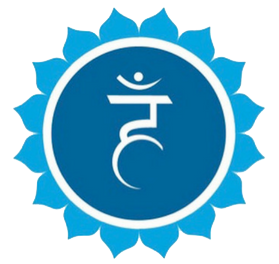
Properties: Also known as the Vishuddha chakra, the throat chakra is located at the very base of our throat, slightly above our collarbones. It rules the thyroid, ears, nose, throat, and lungs, as well as the third cervical vertebra. Close your eyes and imagine a placid aquamarine lotus with sixteen petals.
Qualities: Are you making yourself crystal clear? Working with the throat chakra helps us not only with speaking, but ensuring that our message is the truth. It preserves integrity, affects our listening skills, and promotes efficiency in all communications.
Beneficial Stones: Turquoise, lapis lazuli, aquamarine, sodalite, sapphire, amazonite, blue quartz, and blue topaz encourage expression in proportion to our personal truth.
6. The Third Eye Chakra
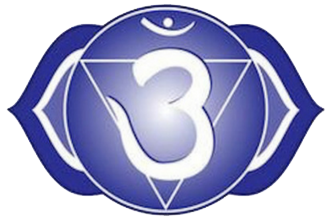
Properties: Also known as the Ajna chakra, the third eye chakra is located just between the eyes and upward, slightly above the brows. Your third eye is connected to your pituitary gland, physical eyes, and first cervical vertebra. It is a royal blue or indigo lotus with 96 petals, although most visual representations will show two large petals which contain the rest.
Qualities: Looking to expand your intuition? If you’ve ever met someone with a certain kind of magnetism, who always knows exactly what to do or say, and seems to have it all together, they may have been polishing their third eye chakra.
Beneficial Stones: Amethyst, lolite, purple fluorite, moldavite, azurite, and amazonite can help you trust your intuition, but also keep you open-minded and organized.
7. The Crown Chakra

Properties: Also known as the Sahasrana chakra, the crown chakra is located at the top of your head. It includes the brain, most specifically the Pineal gland. It is an otherworldly bright-white violet, symbolized by a thousand-petal lotus.
Qualities: The crown chakra connects us to our highest self. It helps us move forward with purpose and inspire others. With an open, clear crown chakra, we are never lost. We are generous, respectful, and dynamic.
Beneficial Stones: Clear quartz, moonstone, selenite, amethyst, clear calcite, Herkimer diamonds, celestine, and goshenite make nonjudgement much easier going, and show us that the entire universe is One.
To be fair, it’s not expected that every one of your chakras would be open, clean, and in balance at all times. If they were, you wouldn’t be you!
Indeed, we all have our strengths and weaknesses. Just having an awareness of your chakras, with contemplation and visualization, can help you resolve issues. You can use chakra work to call forth or tone down qualities you exhibit or want to tap into more.
And of course, it’s not a one-and-done process. Rather, we have to tend to our energy as we would cultivate a garden. The conditions change all of the time, with larger themes that may persist.
Wearing chakra jewelry is another way to remain mindful of each chakra, or maybe just one or two chakras we suspect we might need to work on the most. Moreover, the chakra stones themselves lend more supportive energy to the chakras they relate to.
To get you started on your chakra journey I’d like to offer you a free Chakra Healing Pendant.
All you need to do is pay a small fee for shipping and it’s yours!
Click here to claim your FREE Chakra Healing Pendant now.
Namaste.
Sarah Mills

